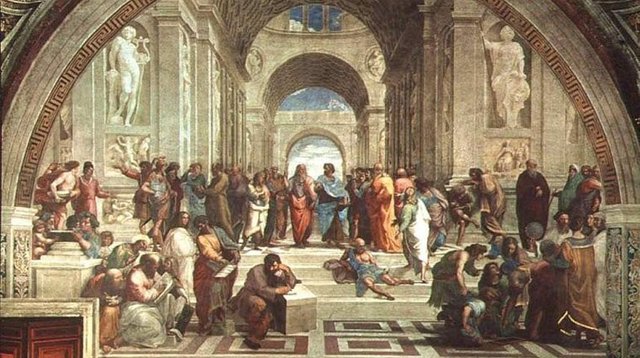Plato and his teaching about the matter
Plato replies that there is also a second essence, a second beginning, a second substance, along with the ideas, which, combined with the ideas, in other words, in which the ideas are derived from the concrete things in the world. Therefore, these things have a dual nature: belonging to ideas, but at the same time displaying and displaying qualities that no ideas exist. This second essence or beginning is matter. Plato himself does not call it "matter". Such a name / ile / and later gives Aristotle, but Plato accepts its existence by trying to express it and characterize it. It's not quite clear how it is he imagined. According to some authors (such as Doisen), he thought matter as a faulty matter, similar to Anaximander's "infinite", which, as we have seen, potentially contains all the qualities but in a form that is not yet manifested, not differentiated, reconciled to the whole. And hardly the surrender and fertilization of this matter with the ideas and the transmission of different forms, it manifests only its potentially existing qualities until then.
Other authors such as Ed. Zeller think that there are two contradictory, opposing principles: the spirit (s) / matter and matter that can only be understood as opposites. Ideas are sensibly invisible - matter is visible, it is visibility, ideas are timeless, time-lasting - matter is temporary, it is temporary, it is the temporality; ideas for purposefulness-matter is centrifugal and aimlessness. Ideas are freedom and meaning - matter is necessity and thoughtlessness, and so on.Here we can continue opposing to infinity: Ideas are good-matter evil. Ideas are the beautiful-ugly matter. Ideas are light-matter darkness. Ideas are reason-matter-unreasonable. Ideas are truth-matter lying. Ideas are formality-the matter of formlessness. Ideas are ideology-the matter of absence, etc., We know today that light and darkness, cold and heat can only be defined by opposing each other. With one speech, everything through which the invisible world differs from the ideal, refers to matter.
Which the ideas and the matter are completely opposite, then the question arises as to how they could combine, how can one influence each other? Plato responds to this question (in the Timaeus dialogue) with his teaching of the world soul, which is both a doctrine of God. According to Plato, dualism between ideas and matter is not absolute. It is overcome by a third beginning, a third essence or substance, which is the world soul, standing over the opposite of the spirit (ideas) and matter: on the one hand it it is lethargic, equal always to itself (unchanging) and eternal, and on the other hand it spreads to the world, it appears in the form of temporality and spatiality, moves and animates everything.The teachings of the world soul relate to the doctrine of God. As we have seen in the kingdom of ideas, Plato knows and permeates everyone ideas - the idea of good. This is precisely this idea of good in other cases is called Creator of the world.

I love this
I upvoted your post.
Keep steeming for a better tomorrow.
@Acknowledgement - God Bless
Posted using https://Steeming.com condenser site.
Nice
You got a 13.19% upvote from @emperorofnaps courtesy of @godflesh!
Want to promote your posts too? Send 0.05+ SBD or STEEM to @emperorofnaps to receive a share of a full upvote every 2.4 hours...Then go relax and take a nap!
This post has received a 7.75 % upvote from @boomerang.